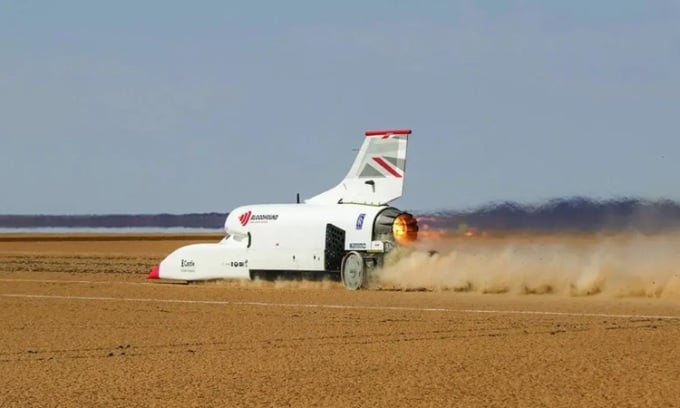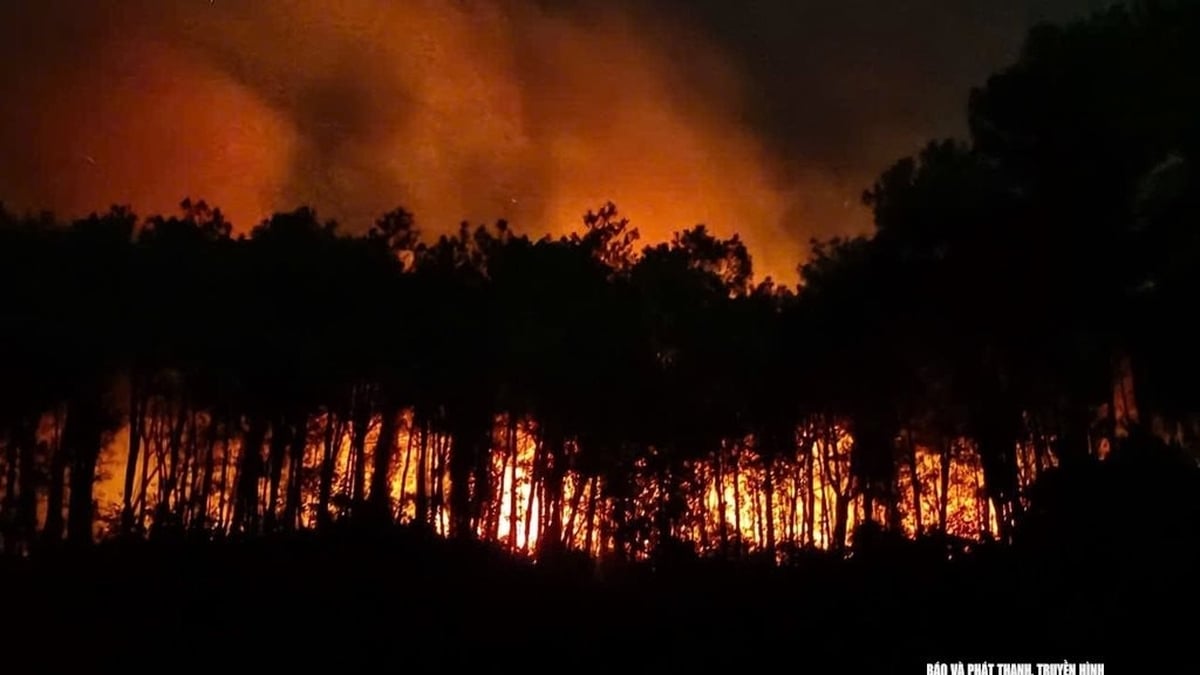Engineers will dismantle and rebuild the Bloodhound LSR race car, adding a rocket to help the vehicle reach a record speed of 1,287 km/h.

Bloodhound LSR race car on the test track. Photo: Bloodhound LSR
The revival of the famous British racing project Bloodhound aims to break the world land record. After a four-year hiatus, team leader Stuart Edmondson is pushing to continue the project. The Bloodhound LSR team now needs a driver to pilot their supersonic vehicle at speeds of more than 800 mph. The project will prioritize drivers who can provide the funding needed to push the goal forward, Interesting Engineering reported on October 9.
In 2019, the Bloodhound LSR team successfully tested the 806 km/h mark in the Kalahari Desert in South Africa, making the vehicle among the top 10 fastest cars in the world. Nearly 20 years ago, a team of British engineers led by Andy Green set the land speed record of 1,227.985 km/h with the Thrust SSC. Since then, thanks to achievements in engineering design, materials, and computational fluid dynamics (CFD), project members are confident that the Bloodhound LSR can surpass that record. From the beginning of the Bloodhound project until the recent test in Africa, Green, a former Royal Air Force pilot, has been the driver. Although he has passed on the position to the next generation, Green still maintains an advisory role working behind the scenes.
The engineering team describes the development of the car as a unique opportunity to attract passionate and skilled individuals who are willing to push the boundaries of speed and inspire them to be a part of history by driving the fastest car on Earth, and Green and his team hope the new driver can bring significant funding to the project. The estimated budget is $14.7 million to set a new record.
Engineers plan to develop a vehicle that does not use any fossil fuels. After testing in the Kalahari in 2019, the car's essential parts, such as the EJ200 jet engine, were removed and stored safely. The team now plans to completely dismantle and rebuild the vehicle before testing it at Hakskeen Pan, a racetrack in the Northern Cape, according to the BBC. In addition to the EJ200 jet engine, they will add a chemical-fueled rocket that does not require the separation of an oxidizer, giving the car a top speed of more than 800 mph (1,287 km/h). The rocket will use peroxide for thrust, which breaks down into a mixture of water vapor and oxygen.
An Khang (According to Interesting Engineering )
Source link




































































































Comment (0)